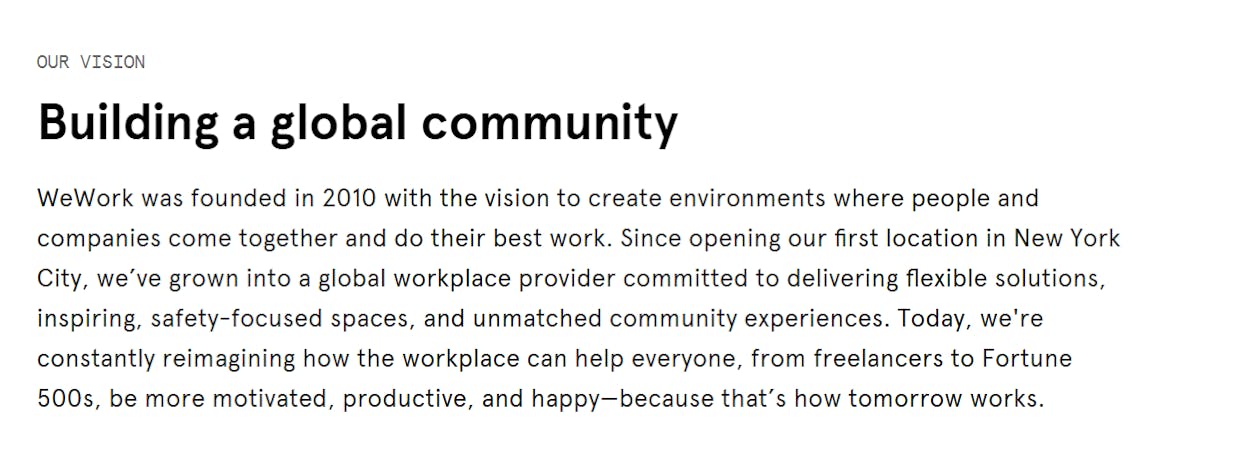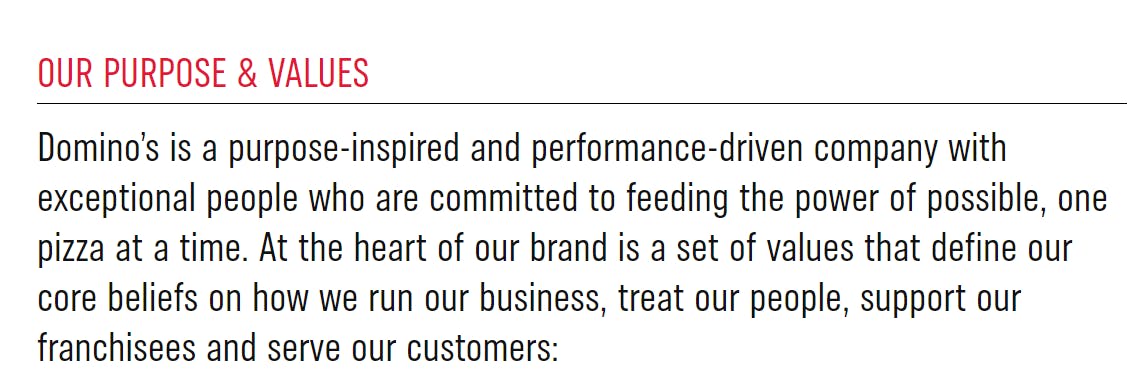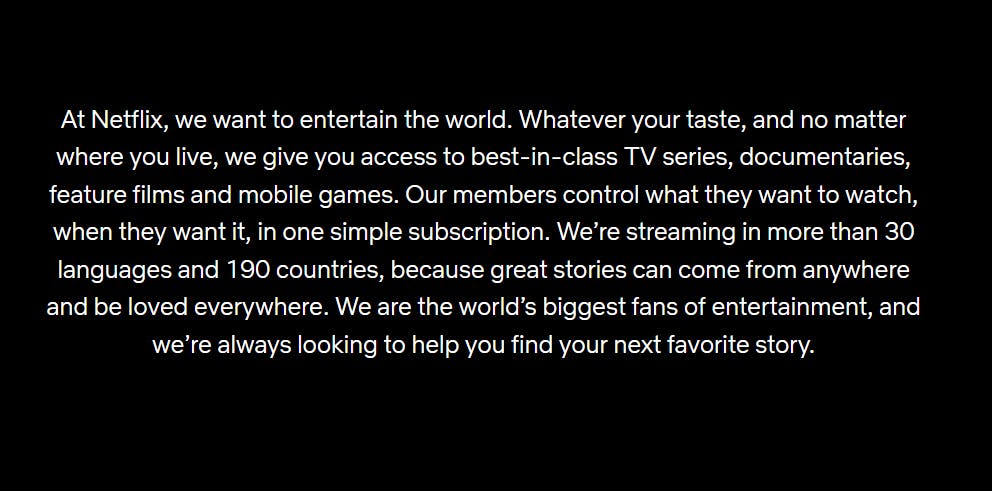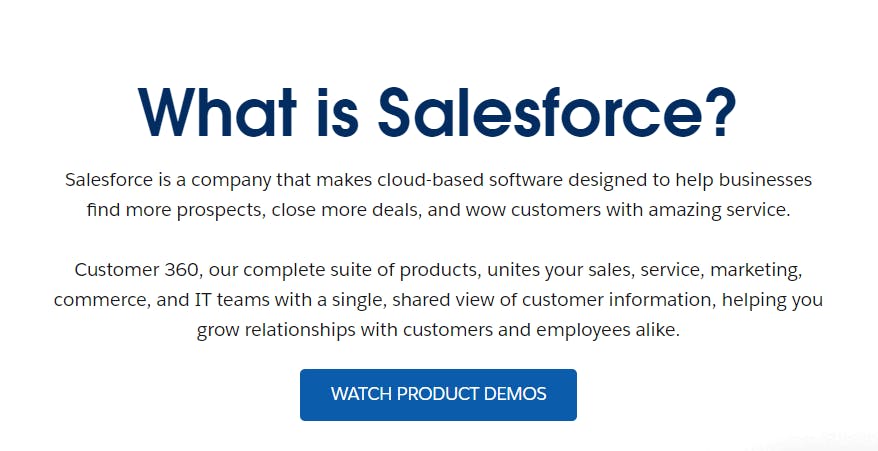Ever heard the phrase "start from the bottom" when dealing with press releases? It emphasises that as you read or write a press release, start with the boilerplate, which lies at the bottom. A standardised boilerplate appears on every press release and can greatly impact the company's public relations (PR) efforts. That is when done right.
The question is, how do you write a company boilerplate for a press release in the right way to offer the right impact? As a professional ecommerce SEO and content platform, we've written boilerplates for many companies.
Let’s look at some company boilerplate examples you can learn from.
What is a company boilerplate anyway?
Generally, a boilerplate is that chunk of text at the bottom of a company's press releases.
It is a consistent piece covering general background information like products, mission, locations, company size, milestones, etc. Companies rarely change their boilerplate text unless they need to update facts or reflect a change in brand direction.
A company boilerplate is critical because it is one of the first things journalists, agents, and publishers will read before deciding whether the release is even worth their time.
Typically businesses use this section to brag about their achievements and appear newsworthy.
What should a company boilerplate include (with some great examples)?
A great boilerplate for a press release should capture the reader's interest. It should drive trust and provide enough information for easy recall. Readers and journalists are increasingly overloaded with content, so you must have something to hook their attention from the outset.
So what should you include to create a captivating boilerplate?
A description of your company
A company boilerplate for a press release should tell the reader who you are in one or two sentences. Words usually limit you in boilerplates; the more concise you keep this, the better.
A good boilerplate example is Spotify.

From the first line, a reader knows in the simplest terms what the company is about (audio streaming services).
Such an approach is excellent for smaller brands without much exposure. You want the journalist or reader to instantly know who you are, what you do, and who you serve.
If your company has multiple products, it usually helps to list them. Why? It helps with brand association. Whereas the reader may not know you by name, they might be familiar with one of your products. So, they will most likely be interested in what you have to say.
A boilerplate example that shows this listing technique is Unilever. They namedrop each of their top brands.

Use appropriate keywords
You must include relevant terms through which people can find you. That doesn't mean you should stuff your boilerplate copy with random words that don't blend; instead, add only terms that you most want to be associated with.
To highlight this, see what WeWork does with its boilerplate.

Source: https://www.wework.com/mission
Their primary offering is office and coworking spaces. And twice in their boilerplate, they mention "flexible space," a competitive keyword in this niche. This approach brings excellent SEO advantages by increasing the chances that their target audience can find them with this term.
So, take advantage and include particular keywords in your boilerplate.
Numbers
Some of the most effective boilerplates online are just lines of impressive numbers. If your industry thrives on such successes, you must include these in your boilerplate.
Identify relevant statistics about your company that put you in a good light. It gives journalists and other readers "a reason to care."
Domino’s Pizza uses attention-grabbing statistics:

Source: https://biz.dominos.com/about-us/our-purpose-and-values/
Domino's pizza boilerplate shows that it is not only a pizza chain but one of the largest and most profitable ones. So, any journalist reading this would instantly know that their readers will be interested in this press release.
A positioning statement
What makes you different?
A journalist or reader should determine right away whether you are worth their time or not. This best reflects in your positioning statement. It also shows your uniqueness and selling points to make you stand out as the leader against competitors or other press releases.
Netflix’s boilerplate is a great example;

Source: https://about.netflix.com/en
See what Netflix did there
There are several other streaming entertainment services out there. But Netflix's communication indicates that they are the top players and even adds some stats to back it up. They mention that they have 222 million paid users across 190 countries.
So, for one who isn't familiar with Netflix, this alone captures their attention perfectly.
Use this strategy for your boilerplate. For example, suppose you are the largest distributor of printers in North America. In that case, it could be a great thing to mention. If you are your city's number-one marketing agency, add it. Of course, with some evidence, if any.
Calls to action
A boilerplate for a press release is incomplete without an appropriate Call to Action. Take advantage of the opportunity to drive traffic to your company pages through press releases. That includes links to relevant landing pages and social media platforms.
Calls to Action could be an invitation to call the company, follow you on social media, read your About page, etc., and allow your readers and journalists to learn more about your company. You probably will share a little in a 50–100-word boilerplate. So additional sources will come in handy for sharing more assets and information.
Often, journalists or agents may not include your links in the final publication, but just in case they need to, it is hugely beneficial to have them in there.
The Salesforce boilerplate is a great example here.

Source: https://www.salesforce.com/eu/products/what-is-salesforce/
This boilerplate is brief but captivating and comes with a link to see how their products work.
Clear Boilerplate Language
Note that all the tips above will only be effective if the press release reader understands what you are saying. So, the company boilerplate must be free of jargon and any complex terminology. The goal is to communicate who you are in the best way.
A great example is the simplicity of Airbnb's boilerplate

Source: https://news.airbnb.com/about-us/
Lipton Tea also embodies simplicity in its boilerplate.
"With more than 125 years of experience, Lipton is one of the world's great refreshment brands, with tea-based drinks including leaf tea, infusions, and ready-to-drink iced tea. For more information, please visit Lipton.com"
What is the purpose of the company boilerplate?
Externally, the boilerplate in press releases usually forms the readers’ first impression of your company. It sets the tone for how they view and talk about your brand.
Internally, the boilerplate helps create other content by providing tone and talking points. Plus, you can use it across all your marketing collateral without making any changes.
A boilerplate is thus an excellent way for the team to pinpoint the company's key selling points that need to be communicated.
Benefits of creating a company boilerplate
● It saves time and money
You won't need to create a new segment or "About us" section every time you write a press release. It helps to have a polished and effective boilerplate you can keep recycling.
And since good copywriting can be costly nowadays, you save by opting for a well-written classic piece you can use repeatedly.
● Provides SEO benefits
Since you use the boilerplate repeatedly in press releases, you can ensure your company name is associated with keywords or phrases of your choice. That is why including keywords is a crucial ingredient for a good company boilerplate.
Plus, a well-optimised boilerplate makes it easy for potential partners and customers to find you. In the long run, that also boosts brand awareness.
● It is a necessity
Any time you want to publish a press release or similar, journalists and PR agents will need your boilerplate. Have your effective copy ready, as you do not want to look like an amateur trying to create one last minute.
● Boosts brand recognition and credibility
An effective boilerplate will help your company build brand recognition within your industry and beyond. Consistency allows your brand name and message to sink into the minds of your target audience.
Furthermore, a powerful boilerplate highlights key company achievements which boost your credibility in the marketplace. Journalists, publishers, prospective partners and customers will more likely pick interest in your business when they see impressive achievements in a press release.
● Lead generation tool
A well-written company boilerplate can be a great way to attract your ideal customers and retain existing ones. It provides them with an opportunity to scan through what your company does. Within a few lines, they should assess your business and decide whether they want to partner with you.
How to write an effective press release boilerplate in a few easy steps
You know what to do and what to include; are you ready to go? So, where do you start?
Step 1: Find your angle
Company boilerplates vary greatly, depending on the business. No two boilerplates will be the same; therefore, it is now wise to copy and paste another business's template without considering all factors.
Typically, your company boilerplate will depend on the following:
● Your industry (Tech, fast food, Marketing, Medical, etc.)
● Your customers (Demographics, B2B or B2C)
● Marketing goals (Drive sales, attract investors, etc.)
● Positioning (What do you want to be known for?)
All of these factors would determine the angle for your boilerplate, for example;
- The goal of attracting investors and partners: Boilerplate highlights earnings, number of users, etc., as seen with fast food chains like Domino's pizza and KFC.
- The goal of generating more sales: Boilerplate focuses on the offerings and links to related pages, as highlighted with Salesforce.
- The goal of driving Brand Affinity: Boilerplate highlights the mission, and charity causes, among others. A clear example is what Amazon is doing with its company boilerplate with their recent focus on "green causes."
Step 2: Write a generic draft
Your first draft will typically be a broad description of your business in an average of 2-3 sentences. An overview would include the following:
● What you do/offer
● Who you offer it to
● How it helps them
● Where you are located
● Your company size
● Your mission and vision
This ensures you have all the critical information first before making any adjustments.
Step 3: Edit and re-edit
Using your draft, you will now want to add specifics; compelling details based on your chosen angle in step 1. Do you need to mention awards, sales growth numbers, etc.?
Whatever you choose to include must be enough for the publisher or journalist to write a good piece for your press release topic.
Furthermore, you will want to get an extra pair of eyes on the copy before finalising it. It will help you spot inconsistencies, incoherent parts, and grammatical errors. You may need to consider letting a professional have a final look. It may cost you, but a poorly written boilerplate copy will make your company look unprofessional and cost you even more in the long run.
As a rule of thumb, keep your final piece under 100 words. Journalists and publishers often have tons of releases limiting their time. They may skip the excessively long boilerplates, especially if they don't know your company or brand.
Use this checklist to analyse your current company boilerplate.
Step 4: Add your call to action
After reading your well-written boilerplate, what do you want the reader to take away? Do you want them to find more information on your site, follow you on social media or contact you?
A company boilerplate is one of the few places you can be “salesy”. So, sell away! Make it clear what you want the reader to do with your information.
Many companies include direct links to their website or multimedia assets. So use that strategy when in doubt.
Lastly, if you want the audience to contact you, remember to show them how, e.g., an email or social address. Prospective partners, customers, and publishers may wish to contact you for more information.
Checklist for an effective boilerplate
The next time you write or edit your company boilerplate for a press release, ensure it ticks all the boxes.
● Length: Is your boilerplate concise, not more than two paragraphs or 100 words?
● Information depth: Does it cover the critical information about your company in a positive light?
● Bragging points: Does it highlight achievements or stand-out honours?
● Clarity: Can it be understood by your target audience, or is it full of jargon?
● SEO factors: Does it contain the relevant keywords associated with your brand?
● Specificity: Does it address what you do without being vague?
● Call to Action/ Contact: When finished, is there any direction for a reader?
BONUS TIP: Align your press release with your marketing goals
When creating a press release boilerplate, you should always keep your marketing goals in mind. . Since it is a form of communication for your brand, it must highlight your selling points and invoke the desired actions.
For example, assume your goal is to drive more sales and attract investments through the press release. Then you might want to use the angle of "problem-solving" when you create the company boilerplate.
Uber provides a good press release boilerplate example. The company aims to encourage more people to use the app to book rides or order food. So their boilerplate shows that they focus on "building products to get people closer to where they want to be."

Source: https://investor.uber.com/news-events/news/press-release-details/2022/Uber-Launches-Dedicated-Advertising-Division-To-Serve-The-Worlds-Biggest-Brands/default.aspx
TAKEAWAYS
A press release boilerplate is the best way to create a compelling brand story. It is between an "About us" section and an elevator pitch that could bring multiple benefits in a press release.
If you observe these fundamental principles, you will write a killer company boilerplate that brings results. Above all, ensure that it aligns with your primary marketing objectives.
And that's it! Time to get writing and nail that boilerplate!
Strategically offers AI workflow automation for ecommerce stores, including product optimization, ecommerce content strategy, and link-building services, as well as general copywriting and more niche content like email, insurance, mental health, finance, or others. Get in touch to talk about your content needs.
Frequently asked questions
How do you write a press release boilerplate?
A boilerplate is a small piece of text, usually one or 2 paragraphs at the bottom of a press release. How you write a boilerplate depends on your business, industry, audience and marketing goals.
To create a great boilerplate, start by creating a general overview of your business, finding your angle, adding relevant details, and making thorough edits.
What Does a boilerplate look like?
It is a standard paragraph of text under a press release with an overview of a company. That could include its positioning, products, market position, and location. It is often titled "About X company" and could include additional links to pages and social media handles.
What is the difference between a boilerplate and a template?
A boilerplate is a consistent text that communicates what a company is about. On the other hand, a template provides a layout and structure for a piece of content. So while a template would show the creator where to place different content elements, a boilerplate provides standard text to place at the bottom.
Should a boilerplate be in first person?
Since the role of the boilerplate is to present information on a company, it usually works best in the third person. Written in the second person, it can sound like an advertisement, while the first person may seem too pompous.
